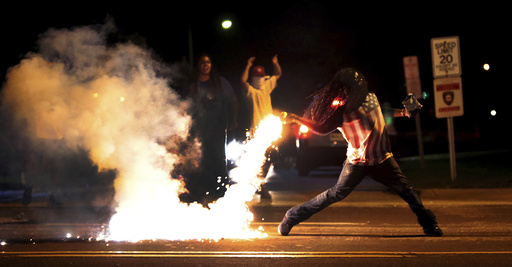On May 28, 2020, Associated Press photographer Julio Cortez was called to head to Minneapolis from the East Coast. What he witnessed on the ground during the protests following George Floyd’s death was different from any previous protest he had covered, signifying a shift in the Black Lives Matter movement. Cortez, along with AP reporter Steve Karnowski, is featured in this episode of The Story Behind the AP Story, discussing their experiences in Minneapolis. AP’s race and ethnicity editor, Aaron Morrison, also provides insight and analysis on the coverage and the racial reckoning in America.
Over the next few weeks, The Associated Press plans to publish a series of stories delving into the impact and legacy of the “Ferguson uprising” that ignited nationwide outrage over police violence and calls for addressing racial injustices. The series aims to explore racial justice in American life, touching on various aspects such as changes within the U.S. Department of Justice, corporate support for the movement, and reflections on race in different spheres like schools, churches, politics, sports, and public health.
Ten years ago, the death of Michael Brown in Ferguson, Missouri, sparked a racial awakening, with the city becoming a focal point for the Black Lives Matter movement. In 2020, George Floyd’s death in Minneapolis further propelled the movement into the spotlight.
Julio Cortez, the chief photographer for the Texas and Oklahoma region of the Associated Press, captured the intensity of the Minneapolis protests following George Floyd’s death. His striking photo, for which he and his colleagues won a Pulitzer Prize, shows a protester carrying an upside-down American flag next to a burning building. Cortez explains that as a journalist and historian, he used the flag to add context to the image and convey the historical significance it holds.
Reflecting on the impact of a decade of racial reckoning, AP’s race and ethnicity editor, Aaron Morrison, highlights the emergence of a new generation of racial justice activists who have spearheaded movements like Black Lives Matter. This shift has not only influenced discussions on police brutality but has also inspired diverse groups to engage in discussions about racial justice in various settings like classrooms, boardrooms, and political arenas.
The Minneapolis protests had enduring implications, notably in reshaping the city’s political landscape towards more progressive and diverse representation. While the issues of race and social justice remain raw and emotive for many, the protests have prompted deep reflection and led to changes at political levels and increased activism across various sectors beyond the streets.
This episode of The Story Behind the AP Story provides a glimpse into the pivotal moments and lasting impact of the protests in Minneapolis, shedding light on the evolving dynamics of racial justice movements in America.
